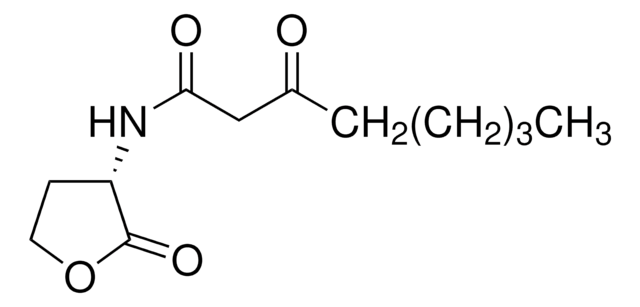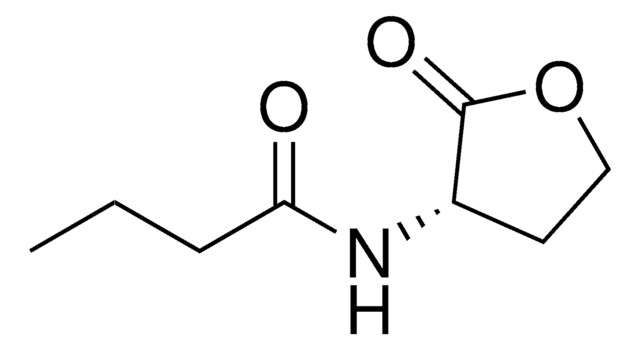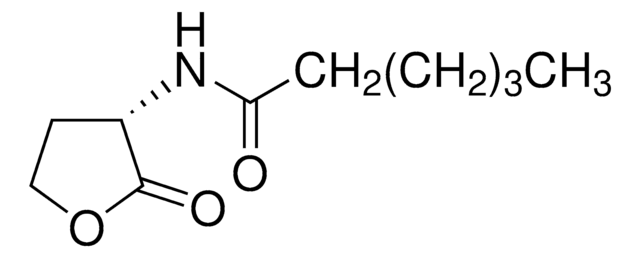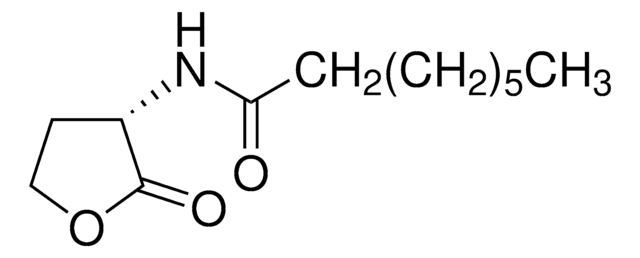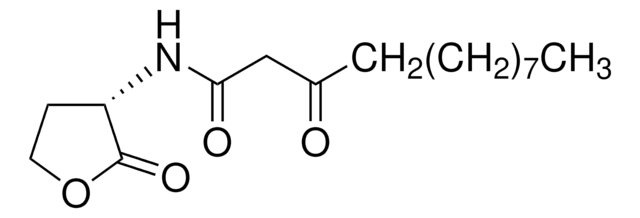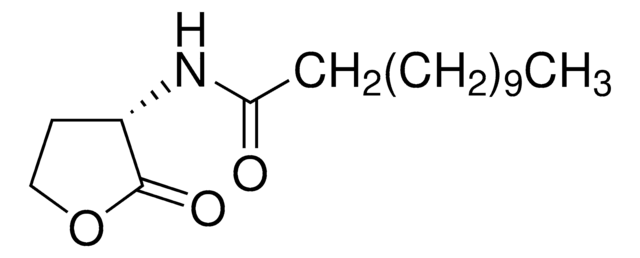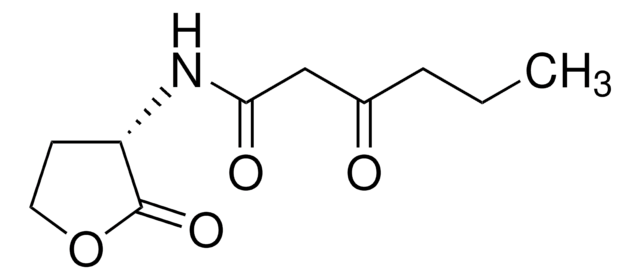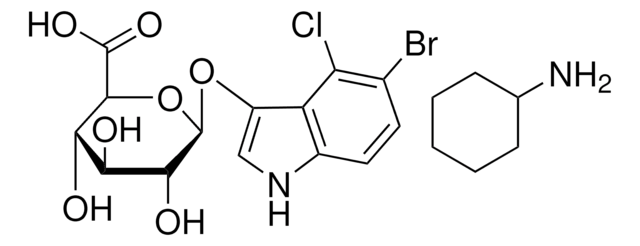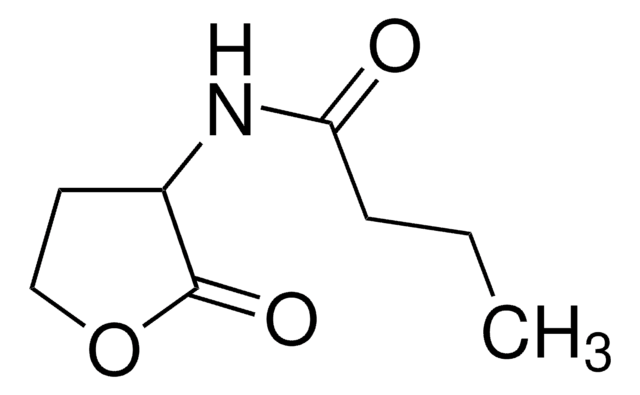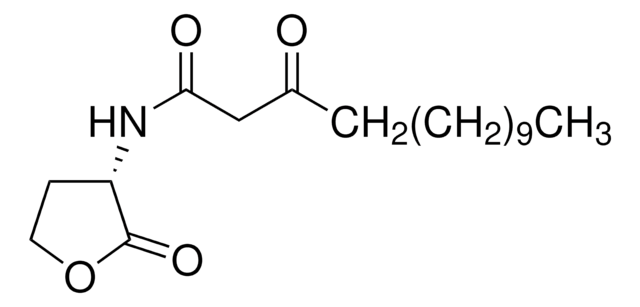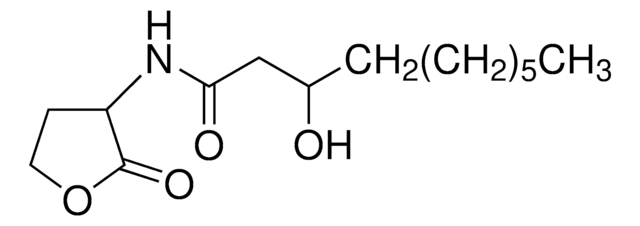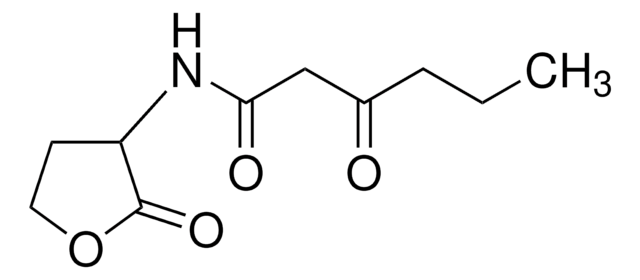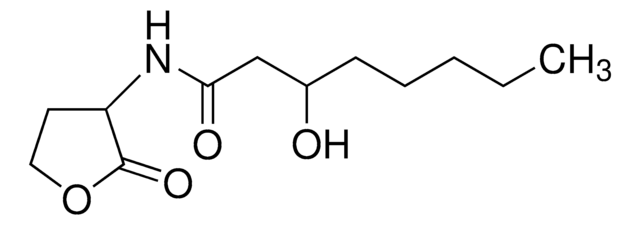07028
N-Decanoyl-L-homoserine lactone
≥96% (HPLC)
Sinonimo/i:
N-[(3S)-Tetrahydro-2-oxo-3-furanyl]decanamide, C10-HSL
About This Item
Prodotti consigliati
Saggio
≥96% (HPLC)
Stato
powder or crystals
Attività ottica
[α]/D -24±3°, c = 0.2 in methanol
Colore
white to off-white
Compatibilità
conforms to structure for Proton NMR spectrum
applicazioni
cell analysis
Temperatura di conservazione
−20°C
Stringa SMILE
O=C1OCC[C@@H]1NC(CCCCCCCCC)=O
O=C1OCC[C@@H]1NC(CCCCCCCCC)=O
InChI
1S/C14H25NO3/c1-2-3-4-5-6-7-8-9-13(16)15-12-10-11-18-14(12)17/h12H,2-11H2,1H3,(H,15,16)/t12-/m0/s1
TZWZKDULKILUPV-LBPRGKRZSA-N
Azioni biochim/fisiol
Codice della classe di stoccaggio
11 - Combustible Solids
Classe di pericolosità dell'acqua (WGK)
WGK 3
Punto d’infiammabilità (°F)
Not applicable
Punto d’infiammabilità (°C)
Not applicable
Scegli una delle versioni più recenti:
Possiedi già questo prodotto?
I documenti relativi ai prodotti acquistati recentemente sono disponibili nell’Archivio dei documenti.
I clienti hanno visto anche
Il team dei nostri ricercatori vanta grande esperienza in tutte le aree della ricerca quali Life Science, scienza dei materiali, sintesi chimica, cromatografia, discipline analitiche, ecc..
Contatta l'Assistenza Tecnica.